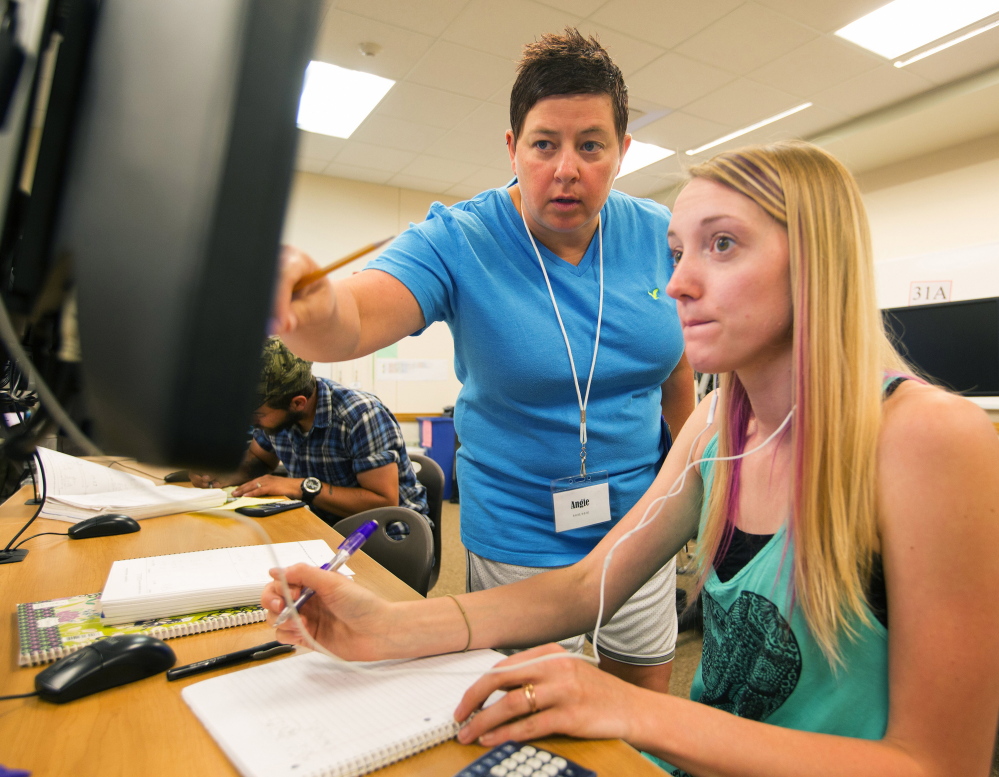SEATTLE — Dena DeYoung traces her trouble with math back to sixth grade, when a well-intended placement test showed she was smart enough to do advanced work.
And for several years, DeYoung did well. But when she reached high school, math became her worst subject. Lost by the logic, unable to imagine how what she was learning would ever come into play in the real world, her math grades plummeted.
“I just never got it,” DeYoung said. “I was barely scraping by. It was just a nightmare.”
DeYoung eventually dropped out of her Shoreline school, and while math was not the only reason, it didn’t help. Instead of a high school diploma, the promising student earned a General Educational Development degree, or GED.
More than any other subject, math trips up students who might otherwise thrive in college, especially those who don’t plan to go into technical careers that require proficiency with numbers.
Failing the state’s math test keeps hundreds of students from graduating from high school each year, even when they’ve met every other requirement. Math is the reason why half of Washington’s high school students who enter community college must take remedial classes — which few ever pass, even after years of struggle.
NO SINGLE ANSWER
A lot of effort has gone into thinking – and arguing – about how best to teach math, hoping to keep it from being such a barrier to higher education. But the math problem also has caused leaders of Washington’s community colleges to ask a fundamental question: How much math, and what kind, should be required for a student to earn a college degree?
Their answer, increasingly, is that there is no one answer.
Students who are studying to become nurses, social workers, early-childhood educators or carpenters may never use intermediate algebra, much less calculus. Yet for years, community colleges have used a one-size-fits-all math approach that’s heavy on algebra and preps students for calculus.
That’s starting to change in a few pioneering schools that are overhauling what math they teach and how they teach it. Some colleges, for example, have started to offer a math sequence that focuses on statistics, and persuaded the state’s four-year colleges to accept it as a college math credit. Others are offering a learn-at-your-own-pace approach.
These experiments, to date, are small but encouraging. The word is spreading about algebra alternatives, many of which include the kind of math students are more likely to need, such as probability and margins of error in opinion polls. Students are flocking to such classes – and they’re passing at much higher rates.
One study found that a statistics-focused class, identical to one offered at Seattle Central College, had triple the success rate when compared with the traditional math sequence, and students finished math in half the time.
A DIFFERENT APPROACH
DeYoung, now 26, enrolled in Seattle Central’s version of that sequence last year, called Statway, but with the nagging concern that she’d soon hit a wall – just like in high school.
But that didn’t happen.
“In the first quarter, I realized there isn’t something wrong with me,” DeYoung said. “I just needed a different approach.”
Seattle Central is one of 19 colleges nationally using Statway, which was developed by the Carnegie Foundation. (The foundation has also developed a program called Quantway that uses math skills to solve real-world problems.)
It’s one of the programs highlighted in a new math strategic plan that calls for all of Washington’s 34 community and technical colleges to find new, innovative ways to approach math.
“For too many students, the pre-college math experience at community and technical colleges has been frustration and failure,” the plan notes.
Send questions/comments to the editors.



Comments are no longer available on this story